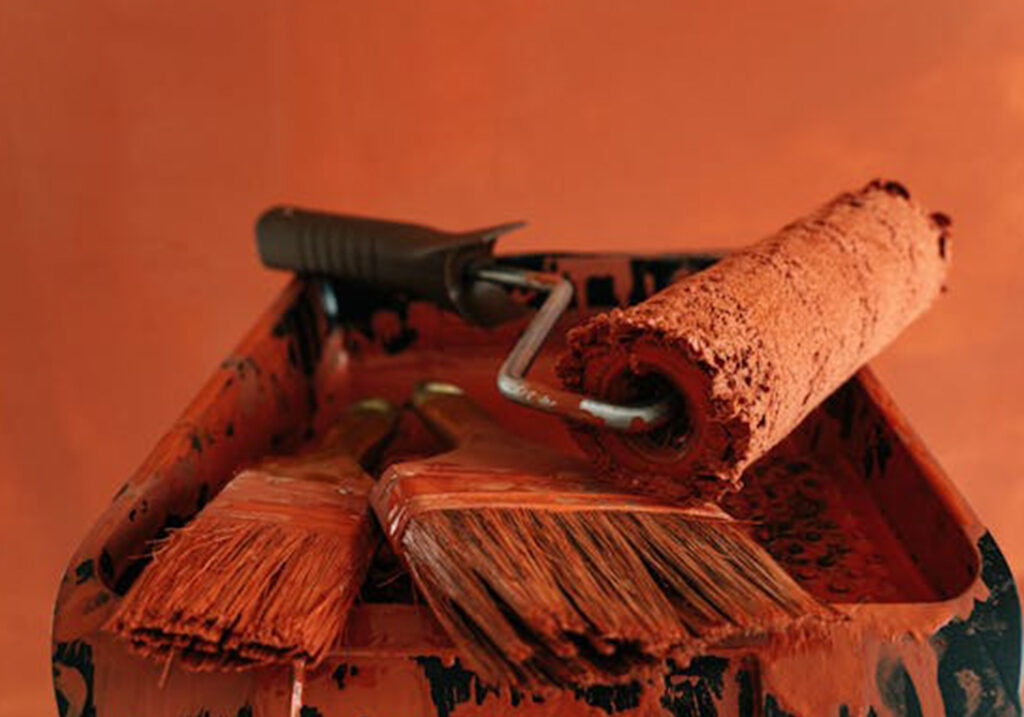While homeowners often invest in durable flooring solutions for their garages, baseboards are frequently overlooked. Nevertheless, applying a protective baseboard coating in the garage offers significant benefits, including improved durability, moisture resistance, and aesthetic appeal.
As you all know, garages are exposed to heavy foot traffic, vehicle movement, fluctuating temperatures, and various spills. Without proper protection, baseboards can quickly deteriorate due to wear and tear, water damage, or exposure to chemicals. A high-quality baseboard coating creates a protective barrier, extending the lifespan of the baseboards and enhancing the overall functionality of the space.
Why does baseboard coating in the garage make sense? Let us discuss its benefits, material options, application methods, and long-term maintenance considerations.
Protecting Against Moisture and Water Damage
One of the primary reasons to coat garage baseboards is to protect against moisture damage. Garages are highly susceptible to water exposure from various sources, including rain, snow, humidity, and even accidental spills. Without a protective coating, baseboards can absorb water over time, leading to swelling, warping, and the potential for mold and mildew growth. This not only affects the structural integrity of the baseboards but also creates an unhealthy environment by promoting the spread of allergens and musty odors. Left untreated, water-damaged baseboards can weaken and deteriorate, requiring costly repairs or replacements.
Baseboard coatings, particularly those made from epoxy or waterproof sealants, create a moisture-resistant barrier that prevents water from penetrating the material. These coatings help ensure that any water exposure remains on the surface, where it can be easily wiped away without soaking into the baseboards. This protection is especially crucial in regions that experience heavy rainfall or snowfall, where vehicles frequently track in moisture. Over time, repeated exposure to water can degrade uncoated baseboards, but a proper sealant extends their lifespan and keeps them looking new.
Beyond weather-related moisture, everyday garage activities can also contribute to water exposure. Washing vehicles, using pressure washers, or working with liquids in the garage can introduce additional moisture to the space. A high-quality baseboard coating mitigates these risks, allowing homeowners to use their garages freely without worrying about water damage.
Enhancing Durability and Impact Resistance
Garages endure a significant amount of wear and tear due to their multipurpose nature. Vehicles, heavy tools, storage items, and frequent movement all contribute to the potential for damage. Baseboards are especially vulnerable to impacts from rolling tires, dropped tools, and shifting storage containers. Without a protective coating, these impacts can lead to visible dents, cracks, or chipping, ultimately reducing the lifespan of the baseboards and diminishing the overall appearance of the garage.
Applying a durable baseboard coating reinforces the material against these impacts, adding an extra layer of protection. Materials like polyurethane, epoxy, and rubberized coatings help absorb shock while maintaining flexibility, preventing cracks and structural weakening. Epoxy coatings, in particular, are known for their hardness and durability, making them an excellent choice for garages with high activity levels. This means that even if the baseboards are accidentally hit, they are far less likely to sustain damage that requires repair.
Over time, repeated impacts on uncoated baseboards can cause pieces to break away, leading to an uneven, worn-out appearance. A reinforced coating ensures that baseboards remain intact and functional, even under constant use. Homeowners who invest in high-quality coatings can expect long-lasting results, reducing the need for frequent maintenance or replacement. A well-protected baseboard contributes to a garage that not only looks better but also stands up to daily use without deteriorating quickly.
Preventing Stains and Chemical Damage
Garages are often home to a variety of chemicals, including motor oil, gasoline, cleaners, and other hazardous substances. When these chemicals come into contact with unprotected baseboards, they can cause permanent stains, corrosion, or even structural breakdown of the material.
Applying a chemical-resistant baseboard coating acts as a safeguard against spills and leaks. Epoxy coatings, for example, provide a non-porous surface that repels oil, grease, and other automotive fluids, making cleanup much easier. Instead of absorbing stains and odors, coated baseboards remain clean and intact, preserving the overall appearance and hygiene of the garage.
Improving Garage Aesthetics
A well-maintained garage isn’t just about function—it also adds to the overall visual appeal of the home. Uncoated baseboards can become discolored, chipped, or dirty over time, making the garage look neglected and unkempt. A fresh baseboard coating enhances the look of the space, providing a polished and professional appearance.
With various color and texture options available, homeowners can customize their garage baseboards to complement their flooring and wall finishes. Some coatings even offer decorative flakes or gloss finishes that give the space a sleek, modern look. A clean, uniform appearance makes the garage feel more like an extension of the home rather than just a utilitarian storage area.
Sealing Gaps and Preventing Pest Intrusion
Gaps between the floor and walls in a garage can become entry points for pests such as insects, rodents, and even small reptiles. Uncoated baseboards may crack or deteriorate over time, creating openings where pests can nest and enter the home.
Applying a high-quality baseboard coating helps seal these gaps, forming a barrier that deters pests. Some coatings, such as polyurethane or silicone-based sealants, provide a seamless finish that eliminates small crevices where insects and rodents might hide. This extra layer of protection contributes to a cleaner and more pest-free garage environment.
Increasing Home Value and Market Appeal
For homeowners considering selling their property in the future, a well-maintained garage can add to the overall market value of the home. Buyers are increasingly looking for homes with finished and organized garages, and small details like coated baseboards can make a difference in creating a positive first impression.
A garage with a polished look suggests that the homeowner has taken care of the property, making it more appealing to potential buyers. Coated baseboards, combined with a well-maintained floor and walls, give the space a finished appearance, making the home stand out in competitive real estate markets.
Choosing the Right Baseboard Coating
There are several types of baseboard coatings available, each with its own benefits. The right choice depends on the garage’s usage, climate conditions, and personal preferences.
- Epoxy Coatings
Epoxy is one of the most popular choices for garage baseboards due to its durability, chemical resistance, and moisture protection. It provides a hard, non-porous surface that withstands heavy impact and spills, making it ideal for high-traffic garages. - Polyurethane Coatings
Polyurethane offers a flexible and impact-resistant surface that works well for garages with frequent temperature fluctuations. It is resistant to scratches and provides a high-gloss finish that enhances the aesthetic appeal of the garage. - Rubberized Coatings
Rubber-based coatings add a cushioned layer to baseboards, reducing the risk of damage from bumps and impacts. They are also waterproof, making them a great choice for moisture-prone garages. - Silicone Sealants
Silicone-based coatings provide a seamless, waterproof barrier that seals cracks and prevents water intrusion. They are often used in conjunction with other coatings to enhance moisture resistance. - Latex Paint with Sealant
For homeowners looking for a cost-effective option, latex paint combined with a protective sealant can offer moderate protection against dirt and minor wear. However, this option may require more frequent touch-ups compared to epoxy or polyurethane coatings.
Application Process for Baseboard Coatings
Applying a baseboard coating requires proper preparation to ensure longevity and effectiveness. Here’s a general outline of the process:
- Cleaning the Surface
The baseboards must be thoroughly cleaned to remove dirt, dust, grease, and any existing paint or coating. A degreaser or mild detergent can help ensure proper adhesion. - Repairing Damage
Any cracks, dents, or gaps should be patched using a filler or caulk before applying the coating. This step prevents further deterioration and creates a smooth surface. - Priming (if necessary)
Some coatings require a primer to enhance adhesion and durability. Priming is particularly important for porous surfaces or baseboards that have been previously painted. - Applying the Coating
The chosen coating is then applied using a brush, roller, or sprayer, depending on the material. Multiple layers may be needed for maximum durability. - Drying and Curing
The coating should be allowed to dry completely before exposing it to foot traffic or moisture. Some coatings, such as epoxy, require a curing period of several days for optimal hardness.
Maintaining Coated Baseboards
To keep baseboards in top condition, routine maintenance is essential. Regularly wiping down the coated surface with a damp cloth helps remove dust and grime. For tougher stains, a mild soap solution can be used. Avoid using harsh chemicals or abrasive scrubbers that could damage the coating.
Inspecting the baseboards periodically for any signs of wear or chipping allows for timely touch-ups, preventing small issues from escalating into more extensive damage. If the coating begins to degrade over time, reapplying a fresh layer can restore its protective qualities.
Conclusion
Applying a baseboard coating in the garage is a practical investment that enhances durability, protects against moisture and chemicals, and improves the overall appearance of the space. Whether you use epoxy, polyurethane, rubberized coatings, or other materials, adding this protective layer helps prevent wear and tear while maintaining a cleaner, more organized garage.
For homeowners looking to maximize the longevity and functionality of their garages, baseboard coating is a simple yet effective solution that makes sense in any setting. By choosing the right materials and following proper maintenance practices, coated baseboards can provide long-lasting benefits that enhance the value and usability of the garage.

